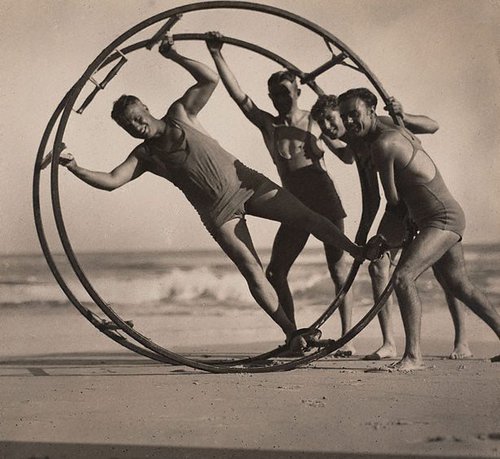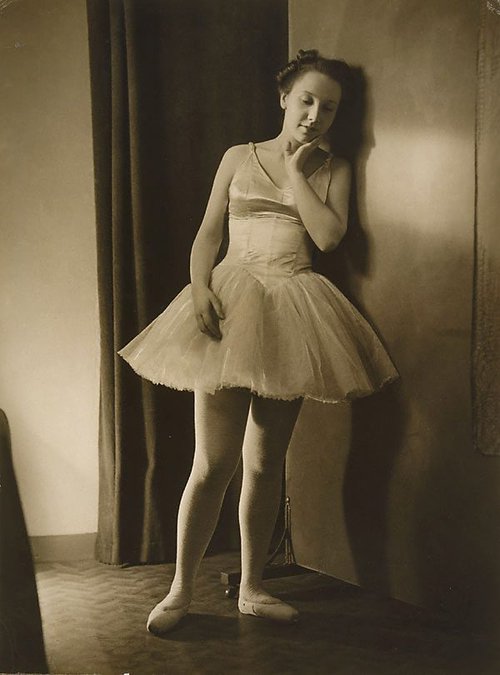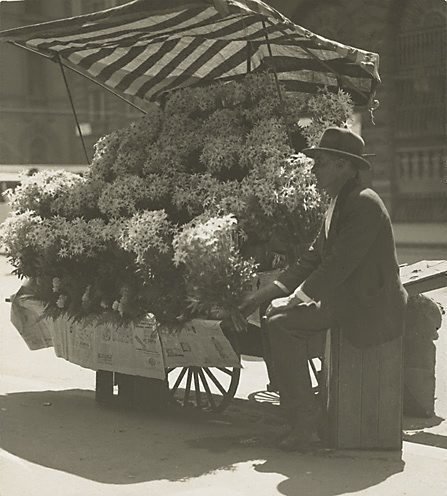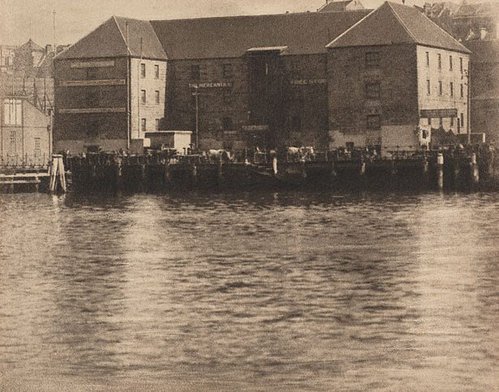-
Details
- Date
- 1918-1919
- Media category
- Photograph
- Materials used
- gelatin silver photograph
- Dimensions
- 13.9 x 24.0 cm image/sheet; 18.2 x 29.5 cm card
- Signature & date
Signed and dated l.r. card., pencil "Cazneaux 1920".
- Credit
- Gift of Iris Burke in memory of Keast Burke 1978
- Location
- Not on display
- Accession number
- 25.1978
- Copyright
- Artist information
-
Harold Cazneaux
Works in the collection
- Share
-
-
About
Spring time exhibits an attention to detail, typical of the Japonisme movement. Cazneaux’s representation of the lake-side scene concentrates on individual blades of grass and the refraction of light off many of the tiny leaves from the hanging branches. In the post-WWI period, the Japonisme movement was concentrated on ideas of simplicity and restraint, calling for attention to delicate detail 1. Cazneaux familiarity with Japanese aesthetics would have increased through his associations with Japanese photographers Kiichiro Ishida and Ichiro Kagiyama. Ishida and Kagiyama lived and worked in Sydney during the inter-war period, and were members of the Photographic Society of New South Wales alongside Cazneaux from 1919 2. Ishida returned to Japan in 1923, Kagiyama left Australia in 1941. Spring time was first published in Harrington’s Photographic Journal in October 1919.
Harold Cazneaux was born in Wellington, New Zealand in 1878. His parents, Pierce Mott Cazneau and Emma Florence (née Bentley) worked in commercial studios in New Zealand before returning to settle permanently in Adelaide during the early 1890s. At the age of 18 Cazneaux went to work alongside his father at Hammer & Co studio as a retoucher. He moved to Sydney in 1904 to join the larger portrait firm, Freeman’s quickly ascending to the position of ‘chief operator’ (as camera portraitists were known). Studio work was highly formulaic, with little scope for creativity. Cazneaux used his time walking to and from work to experiment with pictorialist aesthetics 3. The Photographic Society of New South Wales organised an exhibition of Cazneaux’s photographs in 1909, the first such solo exhibition of its kind in Australia. In 1916 he and fellow pictorialist photographer, Cecil Bostock founded the Sydney Camera Circle. The group was particularly interested in the how pictorialism could be adapted to and extended within an Australian context. The mechanised, standardised and frenetic pace of Freeman’s increasingly took its toll on Cazneaux’s creativity and health, and he resigned in 1917. He moved with his wife and daughters to the Sydney suburb of Roseville, and in 1920 he was employed as the official photographer for The Home magazine. This new position let him work in a varied indoor and outdoor environments. In 1938 Cazneaux was awarded an Honorary Fellow of the Royal Photographic Society of London. He continued to work until his death in 1953.
1. Annear J 2002, Introduction to: ‘Modernism/Japonism in Photography 1920s-1940s: Kiichiro Ishida and Sydney Camera Circle’, Shoto Museum of Art, Tokyo, p 36
2. Miles M 2014, Through Japanese Eyes: Ichiro Kagiyama and Australian-Japanese Relations in the 1920s and 1930s, ‘History of Photography’ 38:4, p361
3. Newton G 1988, ‘Shades of Light: Photography and Australia 1839-1988’, Australian National Gallery, Canberra p 85 -
Exhibition history
Shown in 4 exhibitions
Critic's Choice, Art Gallery of New South Wales, Sydney, 22 Apr 1994–10 Jul 1994
Soft Shadows and Sharp Lines: Australian photography from Cazneaux to Dupain, Art Gallery of New South Wales, Sydney, 30 Sep 2002–17 Nov 2002
Modernism/Japonism in photography 1920s-1940s: Ishida Kiichiro and the Sydney Camera Circle, Museum of Sydney, Sydney, 20 Dec 2003–25 Apr 2004
Harold Cazneaux: artist in photography, Art Gallery of New South Wales, Sydney, 05 Jun 2008–10 Aug 2008
-
Bibliography
Referenced in 6 publications
-
Judy Annear, Look, 'Kiichiro Ishida and the Sydney Camera Circle', pg.18-19, Sydney, Dec 2003-Jan 2004, 19 (illus.).
-
Natasha Bullock, Harold Cazneaux: artist in photography, Sydney, 2008.
-
Natasha Bullock (Curator), Soft shadows and sharp lines: Australian photography from Cazneaux to Dupain, Sydney, 2002. no catalogue numbers
-
Zeny Edwards, Sunlight and Shadow - The Lifework of Harold Cazneaux, Sydney, 1996, 167 (illus.), 199.
-
Robert McFarlane, Critic's Choice, Sydney, 1994.
-
Editor Unknown (Editor), Harrington's Photographic Journal, Sydney, Oct 1919, (illus.).
-




